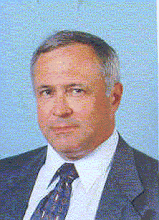A Bomb-Builder, 'Out of the Shadows'
http://www.washingtonpost.com/wp-dyn/content/article/2006/02/19/AR2006021901336_pf.html
Syrian Linked to Al Qaeda Plots Describes Plan to Attack Cruise Ship in Turkey
By Karl VickWashington Post Foreign ServiceMonday
February 20, 2006
Page A01
ANTALYA, Turkey -- Right up to the hot August night his apartment exploded, Louai Sakka's neighbors took him for a newlywed. The lanky Syrian was not seen much in the corridors of the high-rise residential complex where he lived in this sunny resort city, but he spent time nuzzling an attractive young brunette and sipping beer beside the pool.
His real identity began to emerge shortly after 3 a.m. on Aug. 4, when the windows of Apt. 1703 blew out, showering the parking lot with the contents of the kitchen and bits and pieces of the massive bomb Sakka had been painstakingly assembling in the living room. Sakka, who escaped the inferno only to be arrested two days later, turned out to be a senior operative for al Qaeda and intimately linked to major terrorist plots in Turkey, Jordan and Iraq, where he had worked beside Abu Musab Zarqawi, a longtime confederate.
He showed up in Antalya last summer with tens of thousands of dollars in cash and a face altered by plastic surgery. After his arrest, he told investigators he had planned to die steering a yacht laden with explosives into a cruise ship he believed was filled with U.S. soldiers and which was already approaching across the turquoise Mediterranean.
The attack, just 48 hours away when the chemicals ignited, was intended to crown a wide-ranging career in terrorism. Sakka played a role in the so-called millennium plot to attack hotels in Amman, Jordan, on Dec. 31, 1999. Turkish prosecutors also describe him as the planner of the 2003 truck bombings that killed 57 people in Istanbul, financed with $160,000 in al Qaeda funds.
Between attacks, according to his attorney, Sakka provided false passports and other means to help Islamic militants through the web of paths that U.S. military officials call rat lines. The routes crisscross Turkey to and from Afghanistan, Chechnya and, since 2003, Iraq, where Sakka traveled after the Istanbul bombings. Insurgents say Louai al-Turki, as he was known there, played a prominent role in major attacks on U.S. bases and commanded insurgent forces in Fallujah when it served as the militants' headquarters..........
Syrian Linked to Al Qaeda Plots Describes Plan to Attack Cruise Ship in Turkey
By Karl VickWashington Post Foreign ServiceMonday
February 20, 2006
Page A01
ANTALYA, Turkey -- Right up to the hot August night his apartment exploded, Louai Sakka's neighbors took him for a newlywed. The lanky Syrian was not seen much in the corridors of the high-rise residential complex where he lived in this sunny resort city, but he spent time nuzzling an attractive young brunette and sipping beer beside the pool.
His real identity began to emerge shortly after 3 a.m. on Aug. 4, when the windows of Apt. 1703 blew out, showering the parking lot with the contents of the kitchen and bits and pieces of the massive bomb Sakka had been painstakingly assembling in the living room. Sakka, who escaped the inferno only to be arrested two days later, turned out to be a senior operative for al Qaeda and intimately linked to major terrorist plots in Turkey, Jordan and Iraq, where he had worked beside Abu Musab Zarqawi, a longtime confederate.
He showed up in Antalya last summer with tens of thousands of dollars in cash and a face altered by plastic surgery. After his arrest, he told investigators he had planned to die steering a yacht laden with explosives into a cruise ship he believed was filled with U.S. soldiers and which was already approaching across the turquoise Mediterranean.
The attack, just 48 hours away when the chemicals ignited, was intended to crown a wide-ranging career in terrorism. Sakka played a role in the so-called millennium plot to attack hotels in Amman, Jordan, on Dec. 31, 1999. Turkish prosecutors also describe him as the planner of the 2003 truck bombings that killed 57 people in Istanbul, financed with $160,000 in al Qaeda funds.
Between attacks, according to his attorney, Sakka provided false passports and other means to help Islamic militants through the web of paths that U.S. military officials call rat lines. The routes crisscross Turkey to and from Afghanistan, Chechnya and, since 2003, Iraq, where Sakka traveled after the Istanbul bombings. Insurgents say Louai al-Turki, as he was known there, played a prominent role in major attacks on U.S. bases and commanded insurgent forces in Fallujah when it served as the militants' headquarters..........

